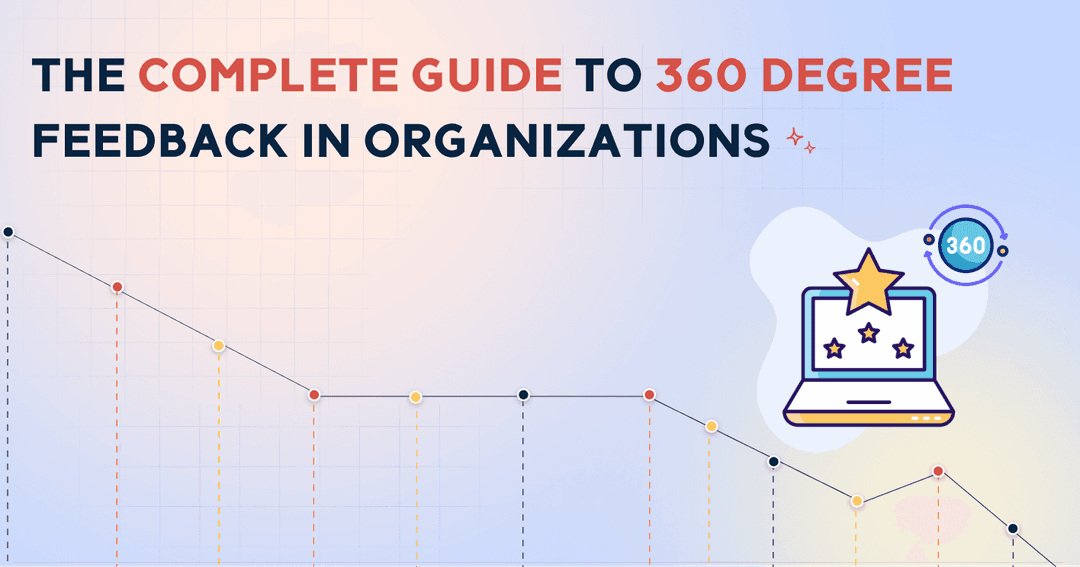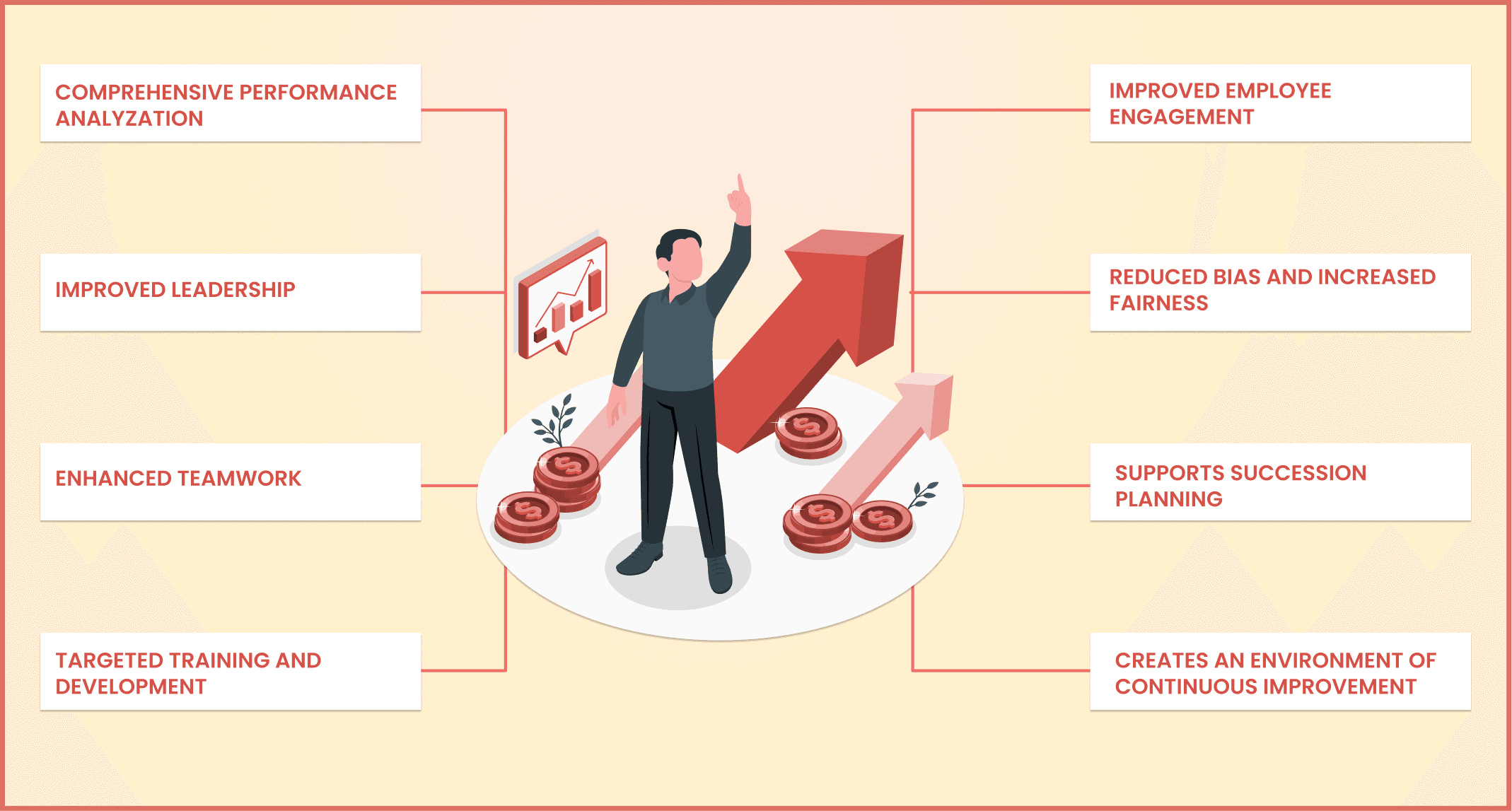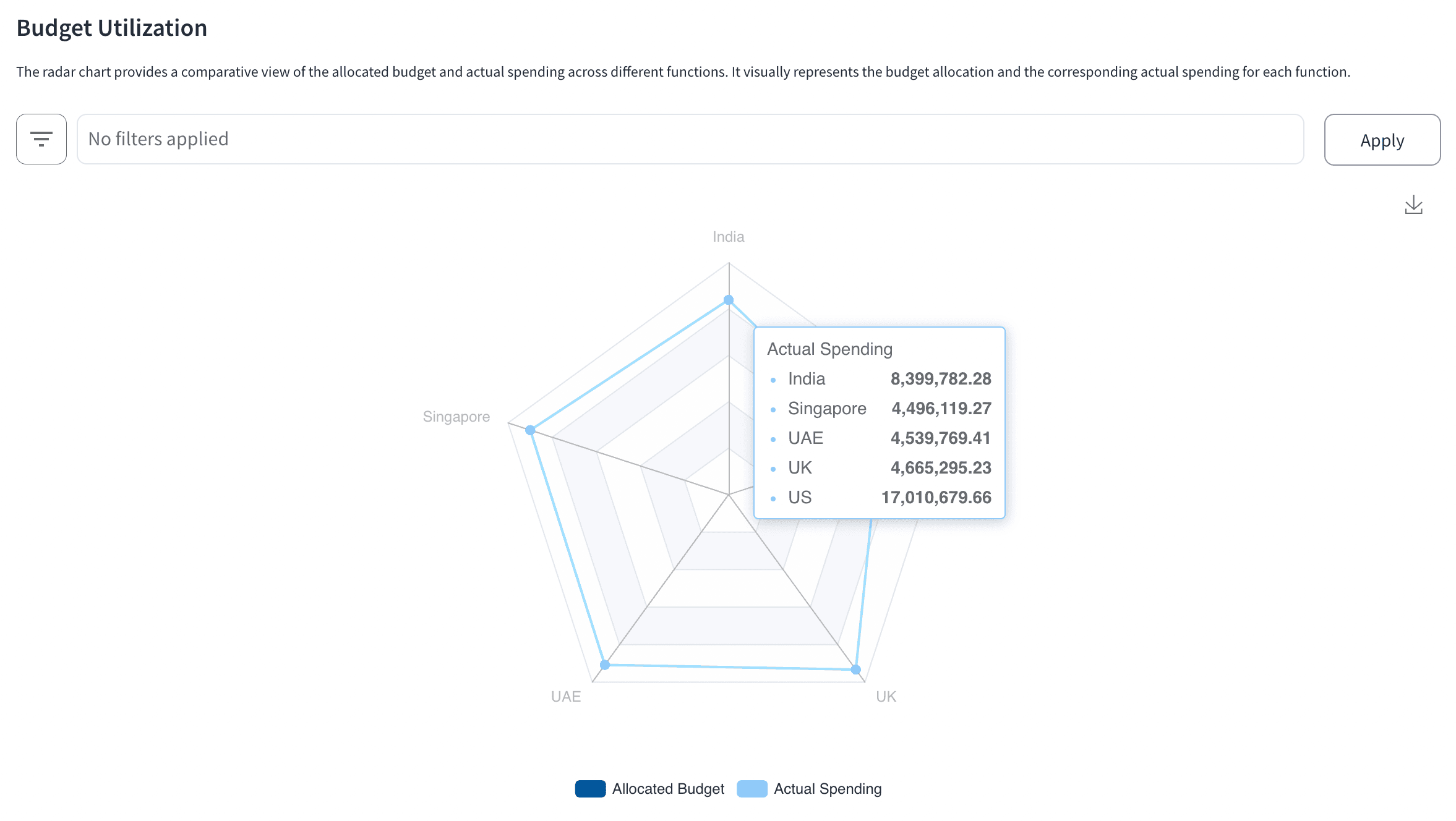
According to Forbes, more than 85% of all Fortune 500 companies have been utilizing this strategy, underlining its significance in modern HR practices. Picture gaining comprehensive feedback and a well-rounded view of an employee before you even hire them. That’s what 360-degree feedback offers.
Also called the 360 review, this assessment system collects confidential and anonymous evaluations from various sources, including supervisors, peers, and even self-assessments. Providing a holistic perspective helps organizations uncover strengths and address developmental needs where required.
As organizations recently are increasingly prioritizing employee development, 360-degree feedback has been growing in importance as a tool geared towards a positive culture of constructive feedback. When used appropriately, 360-degree feedback can enhance teamwork by reducing biases and identifying crucial areas of training, making this a boon for career advancement and organizational effectiveness. However, it can also be harmful if applied incorrectly.
This article delves into the mechanics of 360-degree feedback, explores its benefits, and addresses potential challenges to help organizations maximize its effectiveness.
A 360-degree feedback system is an advanced, multi-source performance appraisal mechanism providing an overview of an employee's performance, behavior, and impact in their previous organizations. Unlike traditional feedback systems, this mechanism takes into account direct reports from previous stakeholders- peers, subordinates, supervisors, and even the employee’s self-assessment. When feedback from former customers, suppliers, or vendors is taken into account- in such cases, it’s called a 720-degree feedback.
This tool proves to be essential for senior leaders and organizational strategists in understanding an employee’s competencies, interpersonal skills, leadership capabilities, and personal and professional developmental needs. It considers diverse perspectives to ensure a balanced, fair evaluation of the employee’s performance across various areas in the organization.
The 360-degree feedback mechanism has numerous benefits that benefit not only the organization but also its employees. Some important key benefits are as follows:

In today’s competitive business environment, organizations need tools that go beyond just evaluating performance; they must promote development teamwork and align people with the organization’s strategic goals. This is exactly what 360-degree feedback ensures, here’s how:
360-degree feedback system provides valuable feedback and a holistic assessment of performance through direct reports received from peers, supervisors, and subordinates and via self-assessments. This ensures that there is a balanced, just, and accurate appraisal process that goes beyond the limiting factors of traditional top-down reviews.
Identifying the strengths of an employee and his areas of improvement, 360-degree feedback ensures that it not only helps in the growth and development of an employee but also grooms them to be future leaders. It gives HR leaders all the necessary data, which enables them to create targeted leadership development programs, thereby ensuring the organization has a robust talent pipeline.
Encouraging honest feedback from all team members encourages open communication and fosters deeper understanding. This, in turn, enhances team dynamics, which minimizes interpersonal conflicts and cultivates a culture that is driven by trust and collaboration.
Effective feedback from multiple perspectives highlights specific skill gaps and professional and personal developmental needs. This enables organizations to design customized training programs that empower employees to improve their capabilities and contribute more effectively.
When employees realize that their growth is valued and see their efforts being recognized and appreciated, they become more passionate and indulged. A transparent, inclusive feedback process boosts morale and fosters loyalty.
This feedback mechanism reduces the risk of favoritism and single-source bias because the input is drawn from multiple sources. This makes performance evaluations objective, equitable, and credible.
The ability to identify potential, build a leadership pipeline, and ensure business continuity and growth is one of the strongest tools that 360-degree feedback has to offer.
Regular cycles of feedback produce an environment in which employees constantly learn, grow, and improve toward perfection. Growth thus gets woven into the organization's fabric.
Being through with all these benefits, by now, you’d have a good idea as to how this tool could prove to be a stepping stone towards success for your organization.
Now, let’s dive into how the process for 360-degree feedback works.
The 360-degree feedback process is essentially a formal, multi-source assessment that is aimed at providing the workforce with a comprehensive understanding of their performance.
A systematic outline of how it works is as follows:
Peers: Colleagues who work closely with the employee.
Supervisors: Direct managers or team leads overseeing the employee’s work.
Subordinates: Team members report directly to the employee, especially for leadership roles.
Self-Assessment: The employee’s evaluation of their strengths, areas for improvement, and accomplishments.
In some cases, external stakeholders may include clients, vendors, or suppliers, as in 720-degree feedback.
HR leaders or managers set clear objectives for the feedback process. The focus areas might include leadership skills, communication, teamwork, technical abilities, or overall effectiveness. Predefined criteria ensure consistency and relevance in evaluations.
Anonymous surveys or structured questionnaires are used to provide feedback. Respondents give honest and constructive feedback based on their experiences of working with the employee. To maintain confidentiality and encourage openness, responses are aggregated.
The feedback is then compiled into a report that focuses on patterns, key strengths, and areas for development. HR teams or managers review this data to identify actionable insights.
The feedback is constructively communicated to the employee, frequently through one-on-one discussions or performance reviews. The emphasis is placed on fostering growth, identifying blind spots, and leveraging strengths.
Based on the feedback, a developmental plan is created which is tailored to include training programs, mentorship, or specific goals aimed at addressing identified gaps and enhancing the employee’s capabilities.
Regular follow-ups ensure that the feedback process yields concrete improvements. The employees, as well as the managers of the organization, track the status of the action plan regarding success and change if necessary.
While 360-degree feedback is transformative for organizations, its delivery sometimes comes with its own set of challenges. If implemented ineffectively- it can induce inaccuracy, disengagement, or even the loss of trust. Here are some common challenges and their solutions:
Challenge: Personal relationships, favoritism, and office politics are likely to manipulate feedback, leading to incorrect appraisal.
Solution: The process would ensure anonymity and confidentiality. Standardized questionnaires would be used, and respondents would be trained to give objective, constructive input. Aggregation reduces individual biases and highlights patterns rather than isolated opinions.
Challenge: Employees may view the process as a criticism instead of a chance for development, resulting in defensiveness or a lack of trust.
Solution: Clearly articulate its purpose and benefits. Treat it as a developmental tool rather than a performance appraisal and provide support through either coaching or training sessions to be able to help employees understand the process and apply feedback effectively.
Challenge: Gathering inputs from different sources can overwhelm the amount of data that is received and, therefore, impossible to analyze and interpret.
Solution: Use advanced tools or software to aggregate and analyze feedback. Instead of focusing on individual comments, focus your attention on identifying key themes and actionable insights.
Challenge: Without follow-up, feedback may feel like a pointless exercise, leading to frustration among employees.
Solution: Build a process for follow-up Follow up on the suggestions made and designation plans with measurable goals to achieve them. Schedule regular meetings to track progress and indicate whose suggestions are affecting meaningful change.
In certain organizational cultures, feedback can be perceived as confrontational, which leads to employees being hesitant to engage or communicate openly.
Solution: Foster a feedback-positive culture by integrating feedback into daily workflows and leading by example. Encourage leaders to model openness to constructive criticism to normalize the process.
Challenge: Organizations expect results overnight or assume that feedback will just correct performance problems.
Solution: Set realistic expectations and emphasize that feedback forms an integral part of a process of long-term development. Combine 360-degree feedback with other development tools like coaching, mentoring, and skills-building programs.
Participants may not have the proper skills to give useful or meaningful comments, resulting in vague and non-useful responses.
Solution: Some require detailed guidance and training on how to give good feedback and share examples of actionable feedback, the importance of honesty and specificity. This is because active participation in these challenges means that the process of providing 360-degree feedback in organizations will not only work but also be a way of continuous improvement and employee development.
To make the 360-degree feedback tools most effective, HR leaders must plan and implement the process with utmost care so that it can add value and drive organizational growth. Here are some best practices to ensure successful implementation:
Define objectives at the outset of the 360-degree process. Are you looking to enhance leadership capabilities, identify skill gaps, or team collaboration? Clear expectations allow the feedback process to be set and ensure everyone knows its purpose.
Anonymity is crucial as it ensures candid, honest input. Employees will give helpful input if they are convinced that their responses are going to be confidential and in no way affect their relationships either with their peers or superiors.
This helps the employee avoid ambiguity and consistent feedback. The standardized and structured surveys or questionnaires use specific, measurable criteria to ensure that feedback can be objective and relevant to the employee's role as well as development needs.
Feedback must be derived from a variety of sources and stakeholders, including supervisors, peers, subordinates, and even self-evaluation. This multi-source strategy provides a balanced view that is well-rounded on performance.
Feedback is not a one-time activity. Use the learnings of the 360-degree feedback process to prepare development plans that are customized to employees' needs. Tie the feedback to organizational objectives and facilitate employees in making specific, measurable objectives.
After feedback is delivered, ensure there is a system in place to track progress. Regular check-ins and follow-ups will keep employees engaged and ensure they are making meaningful improvements.
Use technology to streamline the process. Tools like CompUp can provide real-time data and insights on employee performance, offering a seamless integration of feedback with compensation and rewards. CompUp's compensation management tools ensure that feedback is tied to performance so employees understand the direct impact of their contributions. By automating feedback and development tracking, HR leaders can make more informed talent decisions.
Following these best practices, you can ensure that your 360-degree feedback process becomes a cornerstone of personal and organizational growth. CompUp’s dashboard allows HR leaders to strategically align compensation decisions with performance feedback, seamlessly integrating feedback into merit cycle planning. The budget planning feature provides a comprehensive view of financial resource utilization, ensuring your compensation initiatives are equitable, strategic, and impactful.


With CompUp’s value-driven performance insights, you can tie feedback to meaningful rewards, driving employee engagement while rewarding and motivating top performers. The platform’s budget utilization section and increment distribution tools give organizations clarity on salary adjustments across job levels, helping to address pay compression and create balanced reward structures.
This approach not only enhances talent development but also strengthens succession planning and fosters growth aligned with your workforce’s true strengths. In today’s competitive environment, leveraging these tools empowers organizations to thrive.
Join CompUp today and transform your employee development strategy! Learn more.
360-degree feedback is a powerful tool for promoting growth, collaboration, and alignment with organizational goals. Its effectiveness depends on how thoughtfully it is implemented and the tools used. By addressing challenges and following best practices, feedback can be transformed into a strategic advantage.
Revolutionizing Pay Strategies: Don't Miss Our Latest Blogs on Compensation Benchmarking